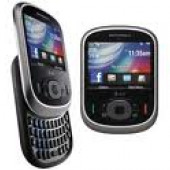Pong Spawns an Industry
Pong Spawns an Industry
In 1972 Nolan Bushnell and Ted Dabney founded Atari and their first release Pong spawned a whole new industry. The simple and addictive game-play sparked a craze that saw videogame arcades springing up in malls, cinemas and restaurants across the United States and beyond.
Pong was based on the tennis game for the Magnavox Odyssey which was the world’s first video game console. Bushnell hired Allan Alcorn to engineer the game and he played the Magnavox version before starting work. Alcorn made several improvements to the basic concept, he introduced the idea of the ball accelerating as the match wore on and also cut the paddle into sections so that only the centre section would return the ball at a 90 degree angle, the outer sections returned it at 45 degrees. Magnavox later took Bushnell and Atari to court but they avoided a lengthy case and agreed to pay royalties so that they could continue to manufacture and sell Pong legally.
Pong was a simple game, the player took control of a paddle on the left of the screen and could move it up and down, they played against the computer or another opponent who had a paddle on the right and a ball bounced between them. The object was to hit the ball and if your opponent fails to return it then you score. The simple instruction on the very first machine was “Avoid missing ball for high score.”
The game was named Pong after the sound Bushnell wanted it to make; he imagined it to be a hollow ringing sound. Alcorn was out of time and money during the development and so he utilised sound from the sync generator and found a way to output it.
Alcorn’s first cabinet version of Pong used a black and white television and was built into a 4 foot wooden cabinet. He intended it as a prototype but Bushnell and Dabney thought it would work as it was and they placed it in a local bar called Andy Capp’s Tavern to see what the response would be like. The response was excellent and the game proved extremely popular until it broke. On closer inspection they realised the machine had stopped working because it was so full of coins and when they removed the money it started to work again.
Realising the potential Bushnell decided Atari should manufacture the system themselves and he acquired an old Roller Rink and converted it into a manufacturing plant for the Pong cabinet. In the first six months they sold over 10,000 coin-operated Pong videogames however they failed to patent it and so the market was soon awash with clones.
Magnavox successfully sued the cloners as well but the games were so successful that there was plenty of money to go around. Atari released a number of variations on the original Pong including four player versions called Pong Doubles and Quadra Pong and twists on the original called Doctor Pong and Pin Pong. They also moved onto new titles and developed a home console which saw the company undergo a meteoric rise to become a much loved household name.


